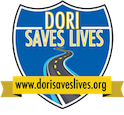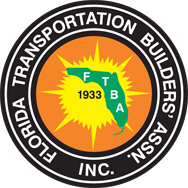
Share the Road Month
Motorcycle, Bicycle, and Commercial Motor Vehicle Safety Awareness Month
All motorists should use extra caution when driving around bicyclists, motorcyclists, and commercial motor vehicles (CMV). Share the Road, so all road users can Arrive Alive!
Commercial Motor Vehicle Awareness
Commercial motor vehicles (CMV), including large trucks and buses, have operating limitations such as large blind spots, long stopping distances, and limited maneuverability that make it essential for other road users to put extra focus on safety. Take action to avoid problems and crashes involving CMVs by following the tips below:
Tips for Motorists
Motorists are encouraged to stay out of the “No-Zone” areas. Commercial motor vehicles have large blind spots in front, behind, and on both sides of the vehicle; this is known as the “No-Zone.” Even though large vehicles have several rear-view mirrors, other vehicles will be hidden from view if within the “No-Zone” or blind spot.

- Do not tailgate! You’ll be in the rear blind spot and may collide with the truck if it stops unexpectedly.
- If you are stopped behind a truck on an upgrade, leave space in case the truck drifts back when it starts to move. Also, keep to the left in your lane so the driver can see that you’re stopped behind the truck.
- Do not use high beam headlights when you are following a truck at night. Bright lights will blind the driver when they reflect off the truck’s large side mirrors.
- When you meet a truck coming from the opposite direction, keep to the right to avoid a sideswipe crash.
- Commercial motor vehicles often need to swing wide to the left in order to make a right turn. Do not drive between the commercial vehicle and the curb—they will not be able to see you.
- Never cross behind a truck that is preparing to back up or is in the process of doing so. Remember, the size of most trucks and trailers completely hides objects behind them from view.
- Pass trucks on the left side for maximum visibility. Avoid cutting in too soon when passing a truck. Large vehicles cannot stop as quickly as other vehicles. Never linger beside a large truck or bus.
- When a truck passes you, keep to the right side of your lane. Do not speed up while the truck is passing you.
- Visit Florida’s Pedestrian & Bicycle Focused Initiative for more information developed specifically for drivers of commercial motor vehicles.
Motorcycle Safety Awareness
Motorcycle and moped drivers have the same rights and duties as drivers of motor vehicles. Learn more about motorcycle rules and responsibilities by downloading the Florida Motorcycle Handbook. Learn more about approved motorcycle safety courses, motorcycle endorsements or Motorcycle Only licenses, by visiting the Florida Rider Training Program.
Rules for Motorcyclists
Under Florida law, motorcyclists must wear eye protection and U.S. Department of Transportation-compliant protective headgear or helmet. Motorcyclists over the age of 21 can only ride or operate a motorcycle without a helmet if they have proper insurance coverage.
To obtain a motorcycle endorsement on their driver's license or a Motorcycle Only license, motorcyclists must complete an approved motorcycle safety course.
Motorcycles and mopeds may not be operated on bicycle paths or footpaths.
Tips for Motorists
- Never attempt to share the lane with a motorcycle. The motorcyclist is entitled to the entire lane.
- Watch for motorcycles and look carefully before pulling into an intersection or changing lanes.
- It is difficult to gauge the speed of a motorcycle; they may appear to be much farther away than they really are.
- Do not follow too closely behind a motorcycle; motorcycles have the ability to stop more quickly than other vehicles.
- Motorcyclists often slow down by downshifting or rolling off the throttle, thus not activating the brake light.
- Never pass a motorcyclist with only a few feet of space. The force of the wind gust can cause the rider to lose control.
- When being passed by a motorcycle, maintain your lane position and do not increase your speed.
- Maintain a four-second buffer zone between you and a motorcyclist, and increase space when encountering inclement weather, gusty winds, wet or icy roads, bad road conditions, and railroad crossings.
Bicycle Safety Awareness
In Florida, the bicycle is legally defined as a vehicle and has all of the privileges, rights, and responsibilities on public roads (except for expressways) that a motor vehicle operator does.
Bicyclists may ride out of the bike lane in the travel lane for their own safety on narrow roads to avoid obstacles or pavement hazards, or to prepare for a left turn. A bicyclist may use the full lane even while traveling substantially below the speed of traffic if the lane is too narrow for both a car and bicycle to share.
Rules for Bicyclists
- Obey all traffic controls and signals.
- Do not ride a bicycle under the influence of alcohol or drugs.
- Stay alert – do not text while biking or wear headphones or earbuds so you can hear everything around you.
- If you are not traveling at the speed of other traffic, you must use the bike lane, and if no bike lane is available, you must stay on the right-most side of the road.
- You may use the full lane when making a left turn, passing, avoiding hazards, or when a lane is too narrow for you and a car to share it safely.
- Use directional hand signals to show other drivers that you are about to turn.
- Never attach yourself or your bike to any vehicle on the roadway.
- If you are riding on a sidewalk or crosswalk, you have all the rights and duties as a pedestrian. However, you must yield the right-of-way to pedestrians.
- Between sunset and sunrise, you must have a white light visible from 500 feet on the front of your bicycle and a red reflector and a red light visible from 600 feet on the rear. Be seen – wear neon or fluorescent colors and wear something reflective when riding at any time during the day.
- All bicyclists and passengers under age 16 are required to wear helmets. However, it is recommended that all bicycle riders wear a helmet, no matter their age.
- When riding with others, you may not ride more than two side-by-side unless it is part of a roadway reserved for bicycles; you must ride single file if you and the other rider are impeding traffic.
Tips for Motorists
- Drivers must give bicyclists a minimum of three feet of clearance when driving alongside or passing them. It’s the law.
- When turning, yield to any bicyclist in the bike lane and make your turn behind the cyclist.
- Avoid using high beam headlights when you see a bicyclist approaching.









